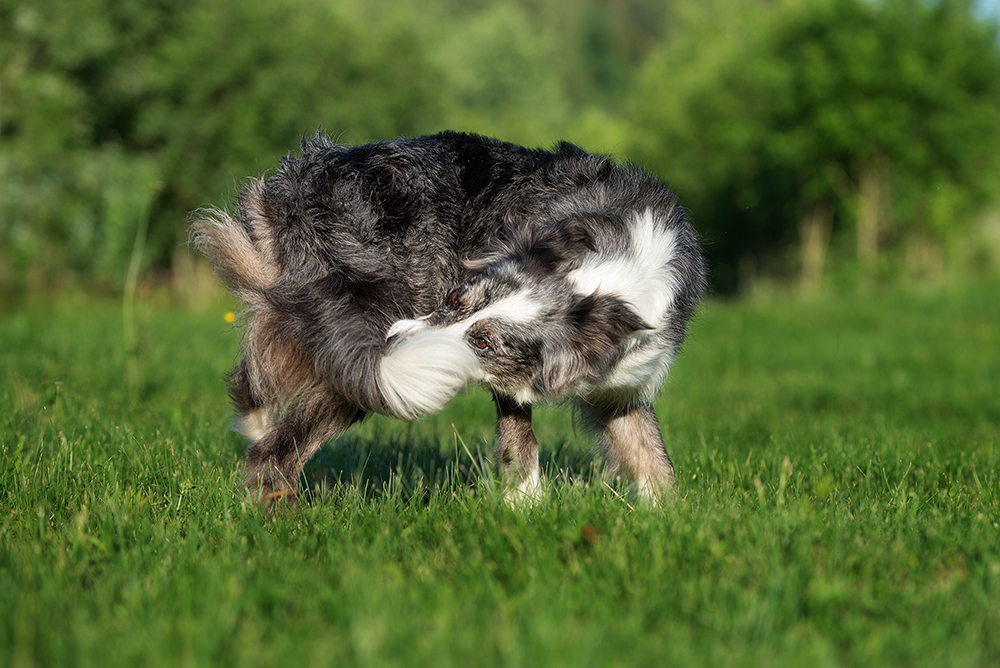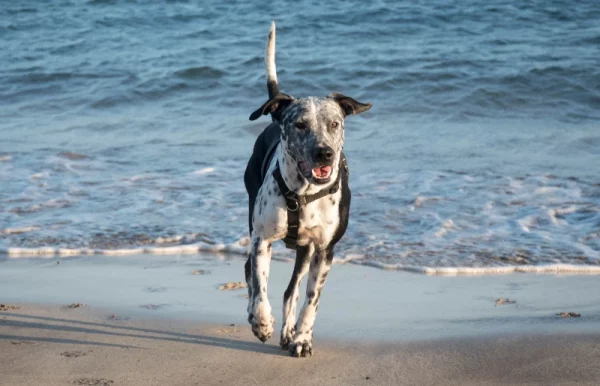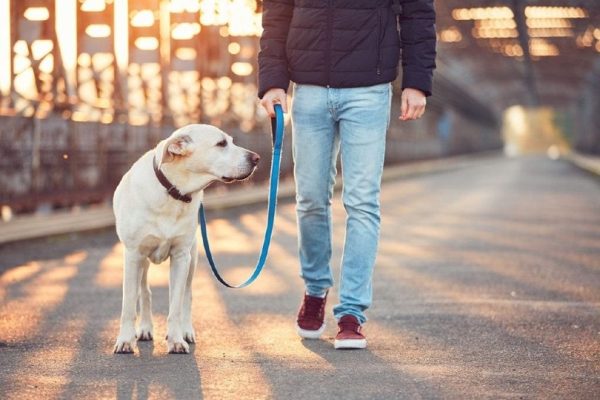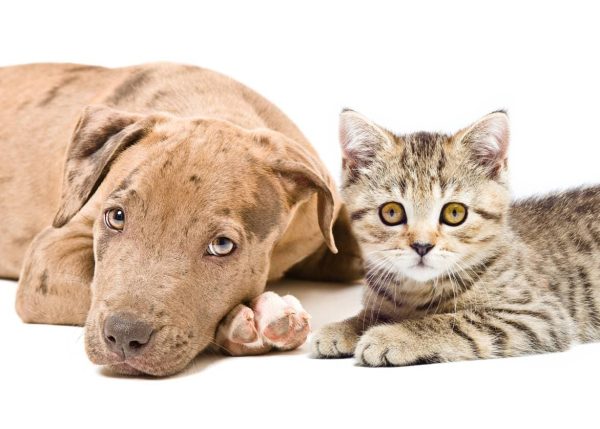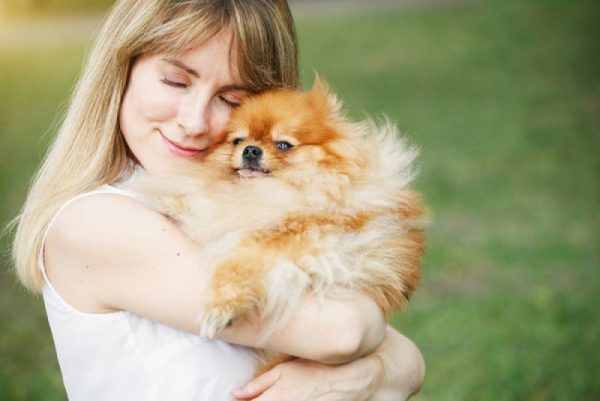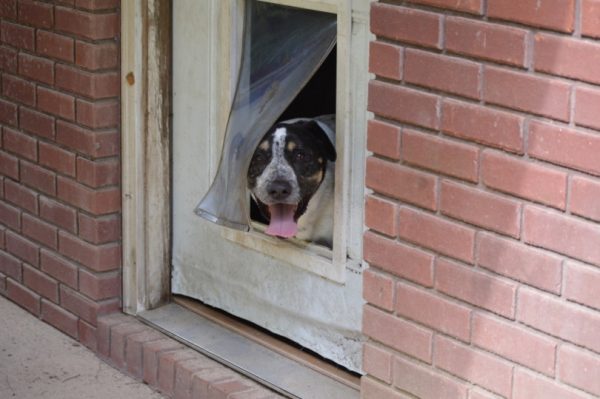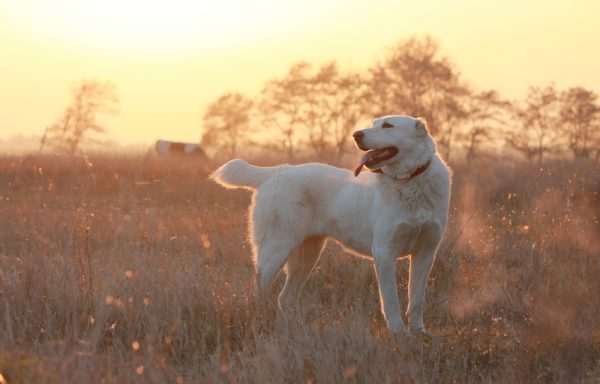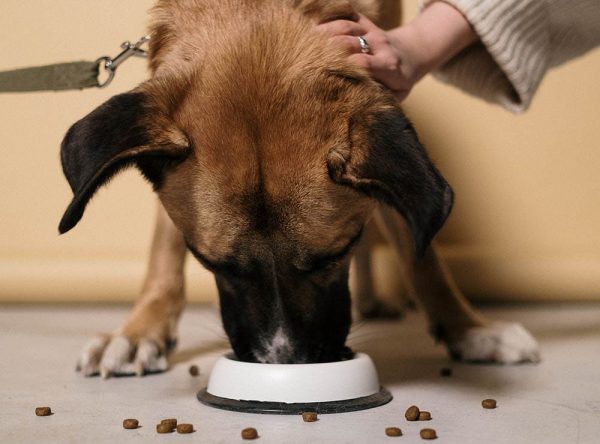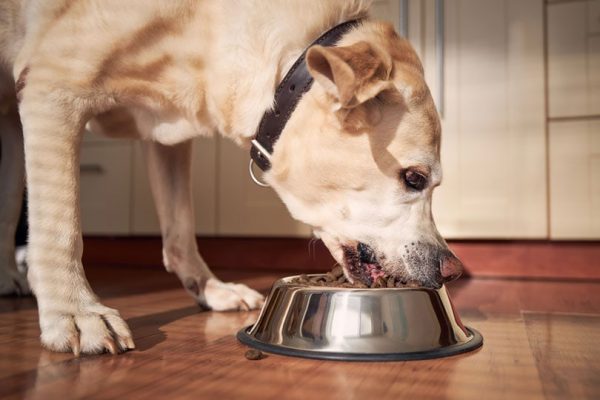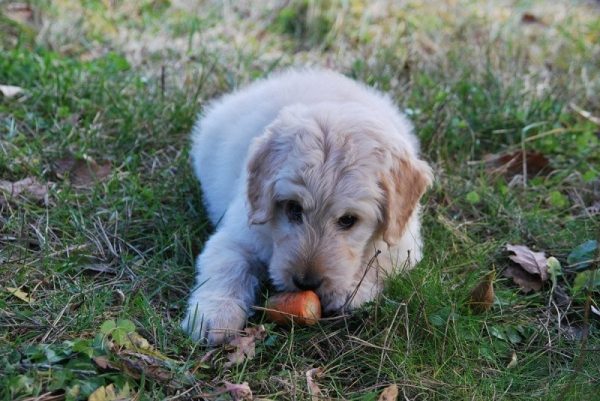As we spend more time with our dogs, we discover their personalities and unique quirks. At some point, we’ll find them engaging in unusual behaviors. Since they can’t verbally explain why they do what they do, we’re often left feeling puzzled.
While we can’t know with exact certainty why dogs engage in these behaviors, we can make some good guesses. Here are some weird things that dogs do and our best explanations for them.
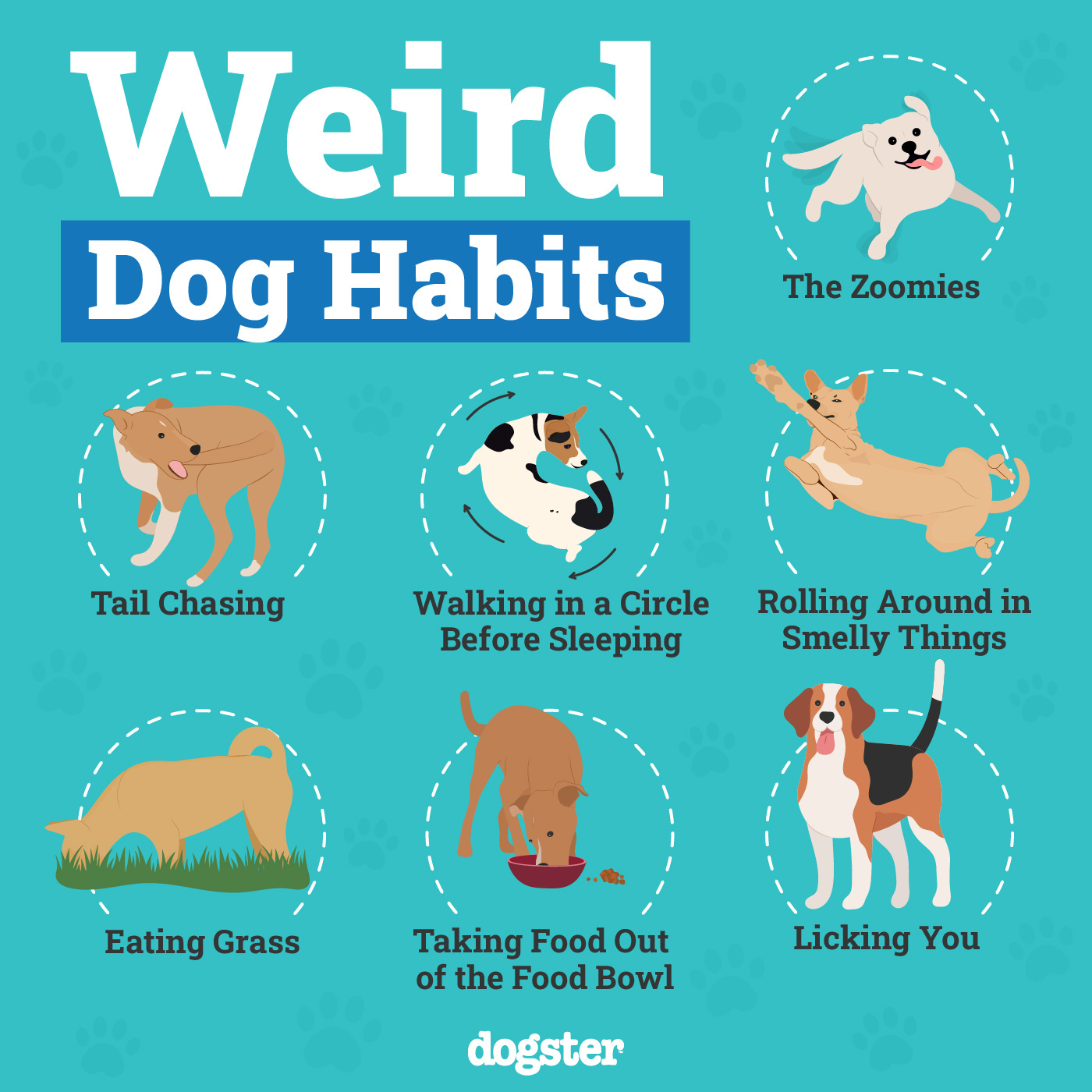

The 7 Weird Dog Habits Explained
1. The Zoomies
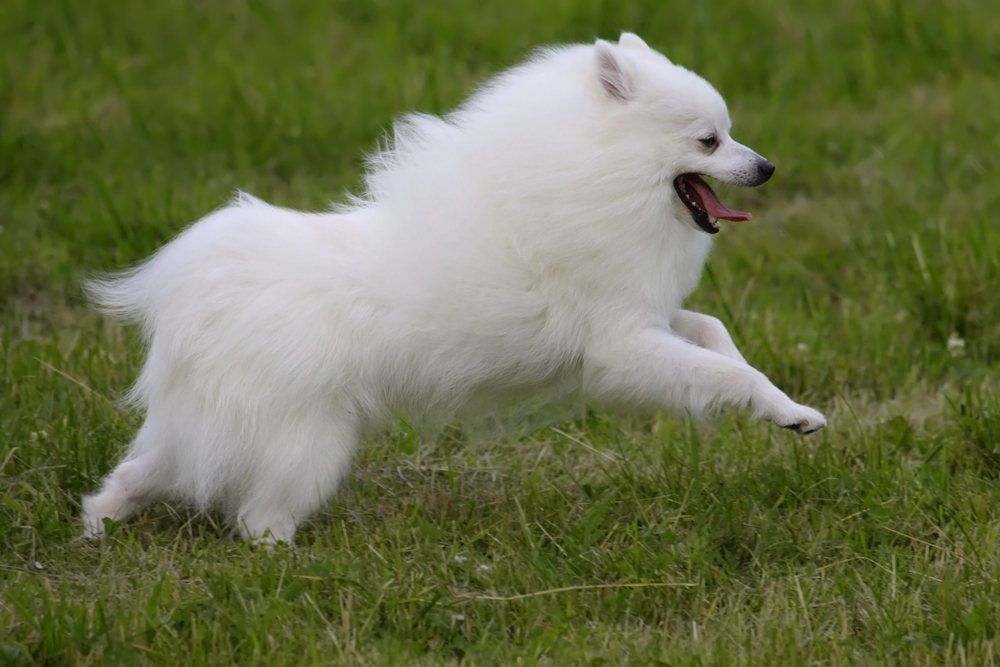
Dog owners are well-acquainted with a case of the zoomies. Dogs with the zoomies will get a sudden burst of energy and start running wildly, but many dog owners don’t realize what they actually are or what causes them. Zoomies are also known as frenetic random activity periods (FRAPs), and they’re caused by different kinds of triggers.
Dogs can get the zoomies during certain parts of the day, particularly in the morning and evening as a way to release excited energy. They can also get the zoomies after bath times or when they feel playful. It’s unclear as to why dogs respond to these things with zoomies but it most often occurs in puppies who are more easily excitable. Some dogs might get zoomies if they are stressed to release nervous energy. Zoomies are usually a normal behavior in dogs and not a cause for concern.
2. Tail Chasing
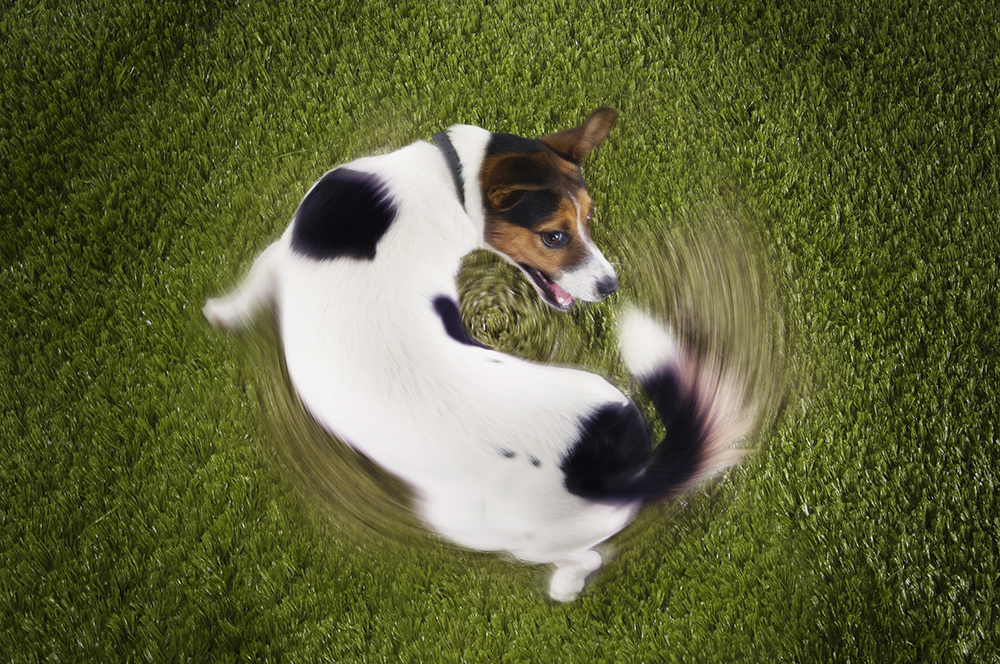
Tail chasing is another common thing to see dogs do. Similar to the zoomies, dogs will chase their tails for different reasons. Puppies are known for chasing their tails because they’re still learning about body awareness. They may not realize that their tails are a part of their body, and it can be an enticing thing to chase.
Tail chasing can also be an indicator of boredom. Dogs that don’t get enough physical exercise and playtime may resort to chasing their tails to expend energy and alleviate boredom. Another reason why dogs may chase their tails is for attention. Many people will laugh and be entertained when they see a dog chasing their tail. The dog may learn that this is attention-getting behavior and may feel more motivated to do it.
If your dog suddenly starts chasing their tail frequently it can also be a sign of an underlying irritation, such as anal gland issues or flea allergic dermatitis.
3. Walking in a Circle Before Sleeping
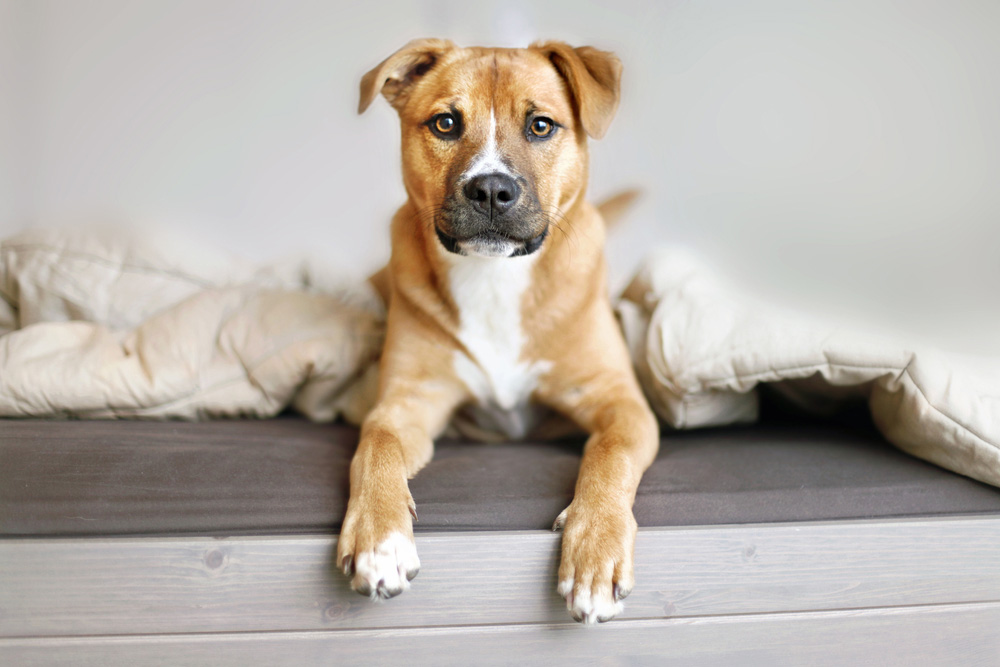
Some dogs will walk in a circle multiple times before they finally lie down. Dog researchers believe that dogs do this because it’s an evolutionary trait that they inherited from their wolf ancestors. Wolves also walk in circles before they rest, and it’s speculated that they do this to know the direction of the wind and lie with their nose facing the wind. Facing the wind helps them to pick up scents better and react more quickly if they’re in danger.
It’s also believed that dogs circle before they sleep because it’s their version of making their beds. They’re trying to get comfortable and make their sleeping space comfortable before they finally lay down and go to sleep.
4. Rolling Around in Smelly Things
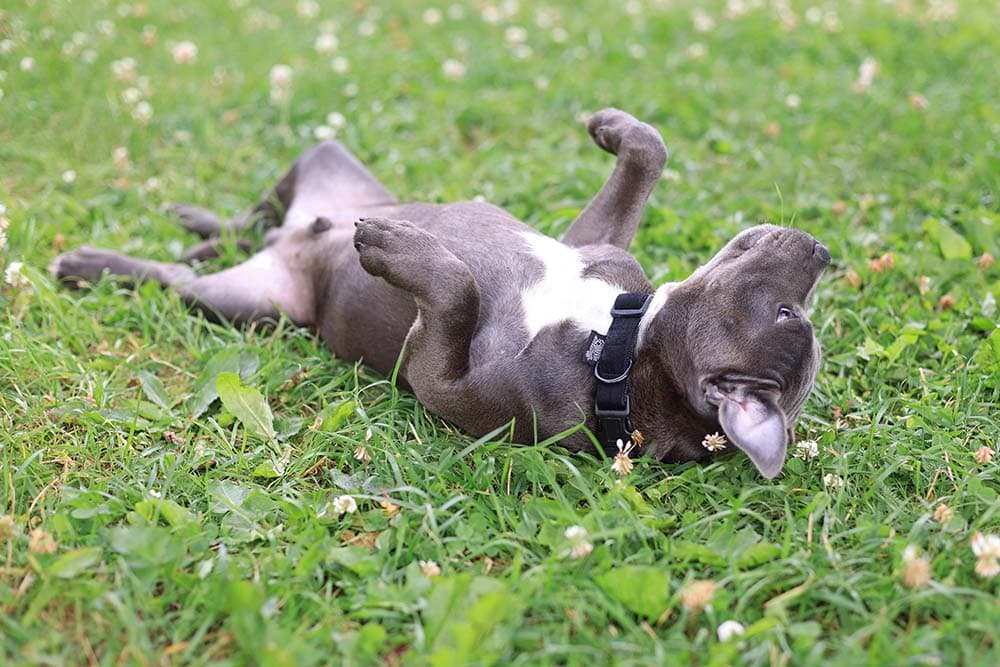
While it’s gross to us, it’s common for dogs to sniff something smelly, like poop or an animal carcass, and decide to roll around in it. There’s no clear explanation for this stinky behavior, but dog behaviorists speculate that dogs do it to cover their own scent. The strong, pungent smells will mask their own scent and help them hide from predators or sneak up on their prey.
Another theory revolves around communication. Wolves often roll in things so that the scent sticks to their body. They can then carry this scent with them and allow the rest of their pack to smell it. Dogs may be mimicking this mode of communication and want to share what they smell with others.
5. Eating Grass
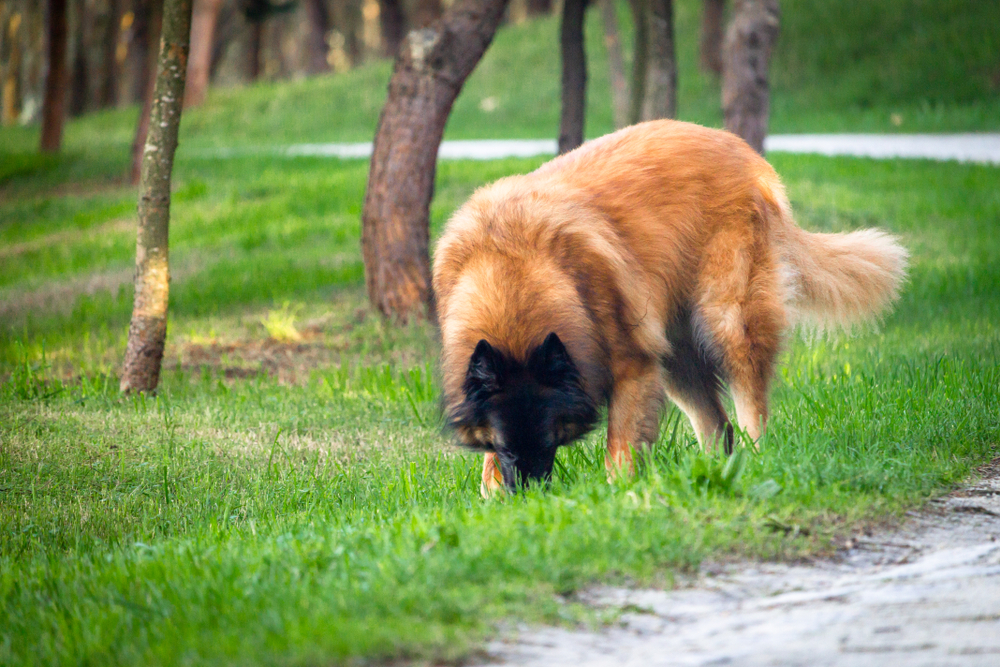
Dogs aren’t grazers, but it’s common for them to eat grass. We only have speculations about this behavior. It’s widely believed that dogs eat grass when they have an upset stomach and want to throw up, although current research suggests this is not always the case. Others speculate that dogs might eat grass if they have a nutrient deficiency or need to eat more fiber, but many probably just like the taste!
6. Taking Food Out of the Food Bowl

For humans, it makes sense to put food in a bowl and eat it. However, it’s quite unnatural for dogs to eat food from a bowl. Many dogs will choose to pick up pieces of kibble out of their bowl and relocate them to a different area to eat.
It is thought that dogs have developed this habit to secure food just for them, many may have started doing this when they were jostling for food as puppies with their littermates. They may continue to do it even when they don’t have competition for food. Also, some dogs may just prefer to eat alone and away from other pets and people.
7. Licking You
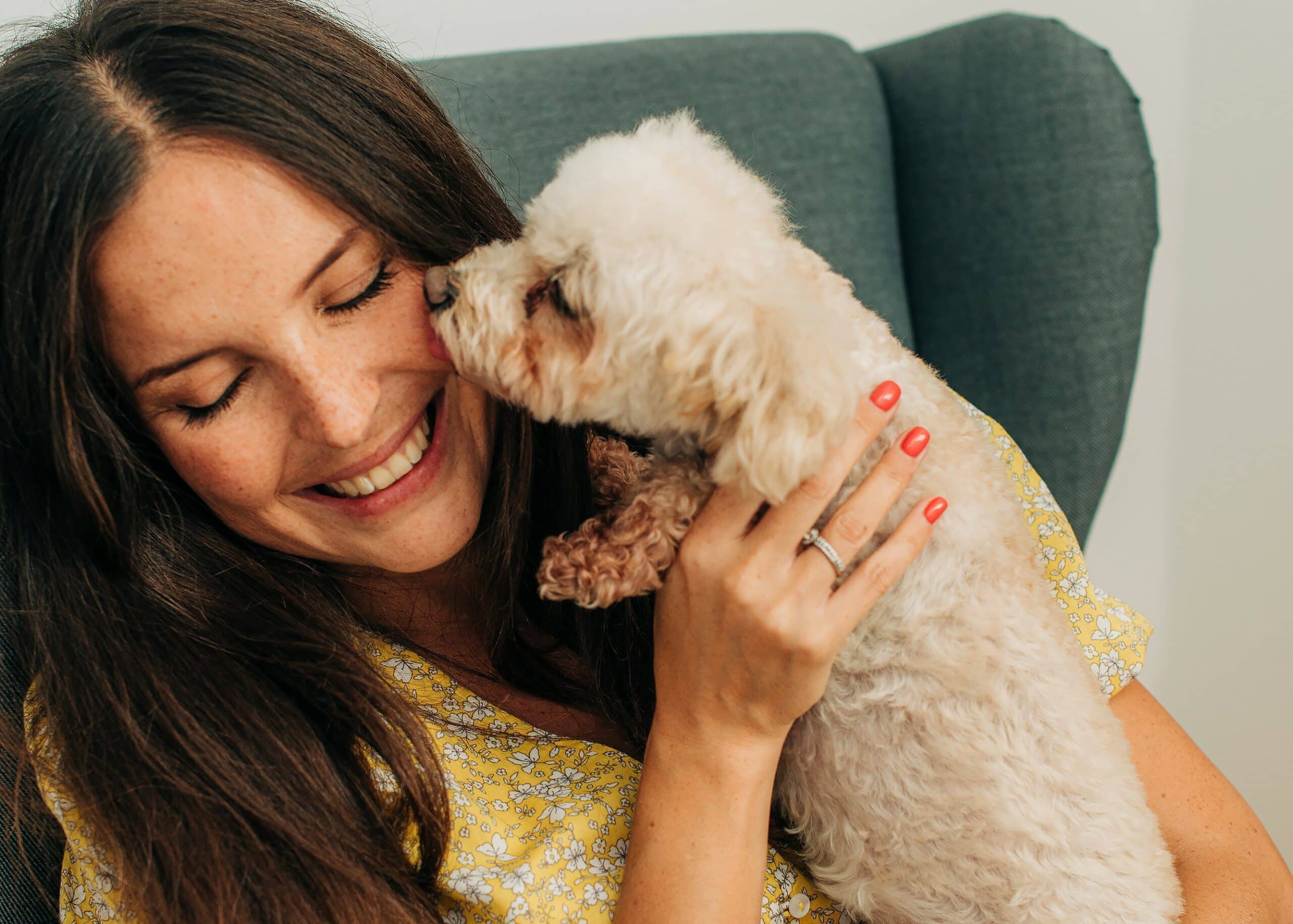
Many dogs are habitual lickers and may randomly decide to lick their owners. While many dog owners will interpret this as affectionate puppy kisses, there may be other reasons why dogs do this. Licking is an instinctive behavior, young puppies often lick their mother’s mouth to encourage her to regurgitate food for them to eat, they also groom themselves and littermates as a way of bonding, although as adults they rarely lick each other. Dogs may lick you to get attention, because they are hungry, or simply because they like the taste.
Licking can also be a stress reliever, as well as a sign that a dog is anxious and needs to be given some space. It’s important to look at the situation and the rest of your dog’s body language to try and work out the most likely reason behind the licking.

When Should I Be Concerned With Weird Behaviors?
Many strange behaviors that dogs engage in are actually normal for them. However, if these behaviors start to become a problem or seem excessive, it’s important to address them. For example, it’s perfectly normal for dogs to have the zoomies, but if they have them multiple times a day, it can be a sign of boredom and not enough exercise.
It’s also worth taking your dog to a veterinarian if your dog starts displaying behaviors they’ve never had before. Sudden changes in behavior and personality can indicate an underlying health issue. So, it’s best to consult a veterinarian to see if behavioral changes are due to a medical cause.
When it comes to obsessive or excessive behaviors, a professional dog trainer or behaviorist will be an invaluable resource to you. They can help you understand what’s triggering the behavior and develop a plan to provide healthier alternatives for your dog.
If you need to speak with a vet but can't get to one, head over to PangoVet. It's our online service where you can talk to a vet online and get the advice you need for your pet — all at an affordable price!


Conclusion
In most cases, the weird behaviors we’ve listed are normal for dogs, and dog owners will get used to them eventually. However, if you notice that they’re becoming obsessive, make sure to seek professional help for your dog. Any new and sudden change in behavior is also worth investigating with a veterinarian. Dog trainers and veterinarians can help you determine if your dog is healthy and engaging in normal behaviors and provide assistance with any dogs that require making some behavioral changes.
Featured Image Credit: otsphoto, Shutterstock
